It is not unusual that customers will ask for list filters to be created. While many users who are used to SharePoint would probably use the column headers to filter, not all users are SharePoint savvy and that's how I get those requests.
This solution will show how to create an alternative for those cases when customers want something looking more like a regular Web page and not like a SharePoint list.
The elements I usually use for this solution are:
- Filters (Blank Web Part) page
- Custom list with the information to be filtered
- HTML Form Web Parts, one per needed filter
- HTML custom code
- Data Connections
Step 1 - Create Custom List
For the sake of time, I'm going to assume you have your custom list already created, including views and everything else. In my example, I'm going to be using a very simple list that tracks people on duty for three available shifts (morning, afternoon, and evening).
Step 2 - Create Filters Blank Web Part Page
In SharePoint, go to the Pages library and create a Blank Web Part Page and name it Filters or anything else that might better suit your needs.
Step 3 - Add HTML Form and List Web Parts to the Filters Page
Edit the Filters page and add one HTML Form web part for each filter you are going to be needing plust the Clear All Filters button within the web part zone or zones of your choice. Add the custom list view web part somewhere on the page, as well. And don't forget to edit the list web part to apply the list view of your choice.
I don't like the web part chromes, or their titles. So I usually remove all those settings and I add Content Editor Web Parts right above or next to the HTML Form Web Parts to include meaningful text for my users and I format the text to my needs. So feel free to do so, as well.
Step 4.a - Provide Appropriate HTML Code - Clear All Filters
Edit the HTML Form Web Part that will be acting as the Clear All Filters button.
Select [Source Editor...] at the Form Content Editor section of the web part tool pane. This is how the code usually looks:
<div onkeydown="javascript:if (event.keyCode == 13) _SFSUBMIT_"><input name="T1"/><input value="Go" onclick="javascript:_SFSUBMIT_"/></div>
One comment about this code. I don't know in your experience, but in mine, many users do not really understand what 'Go' means. So for this reason, I always prefer to change that to either Clear All Filters, or Apply Filter depending on my situation. So in this case, it is going to be renamed to Clear All Filters. And I also modified the rest of the code to look like this:
<div style="text-align: left">
<input onclick="location.href='https://SiteURL/Pages/Filters.aspx'" value="Clear All Filters"/>
</div>
(Note: If the code above gives you trouble, see the note added on August 2012 at the bottom of this post)
If you would prefer a different alignment, replace left with either right, or center. Replace SiteURL in the code above to the full path to your Filters page. Save the web part. This code will simply "refresh" the page to make it look like the list has been cleared of all filters when selected (clicked).
Step 4.b - Provide Appropriate HTML Code - By Person
Edit the HTML Form Web Part that will be acting as the first of your filters; in our example, the first filter will be used to filter the list based on person name. Select [Source Editor...] at the Form Content Editor section of the web part tool pane and replace the code with the following,
<left>
<div onkeydown="javascript:if (event.keyCode == 13) _SFSUBMIT_">
<select name="Title">
<option value=""></option>
<option value="Anne">Anne</option>
<option value="Jane">Jane</option>
<option value="Mary">Mary</option>
<option value="Susan">Susan</option>
<option value="Tim">Tim</option>
</select>
<input type="button" value="Apply Filter" onclick="javascript:_SFSUBMIT_"/></div>
</left>
If you would prefer a different alignment, replace left with either right, or center.
Since I used the Title column to save the names on my list, this is the value I input where it reads select name, even when I renamed that column to Name. It is important to point out that the code will only work with the internal name of the column.
The first option value remains with no option for when nothing has been selected, yet. Replace the rest of the values and add or remove lines to matching your needs.
Save the web part.
Step 4.c - Provide Appropriate HTML Code - By Shift
Repeat all the steps in section 4.b and replace the code with the following,
<left>
<div onkeydown="javascript:if (event.keyCode == 13) _SFSUBMIT_">
<select name="Title">
<option value=""></option>
<option value="Morning">Morning</option>
<option value="Afternoon">Afternoon</option>
<option value="Evening">Evening</option>
</select>
<input value="Apply Filter" onclick="javascript:_SFSUBMIT_"/></div>
</left>
Make changes as appropriate to match your needs and save the web part.
Step 5 - Establish the Data Connections
This is where people may differ on how to proceed. Some people use SharePoint Designer to establish the data connections. However, for simple data connections like the ones in this example, you may establish them within SharePoint itself. And that's what I'm going to explain in the next lines.
Edit the first HTML Form Web Part (By Person). Select Connections > Provide Form Values To > Daily Schedule (or the name of your list).
SharePoint displays the Choose Connection web page dialog. In the 1. Choose Connection tab, select Get Filter Values From at the Connection Type drop-down list and then select [Configure].
SharePoint switches to the 2. Configure Connection tab. Select the Provider Field Name (for our example, that would be Title) and the Consumer Field Name (For our example, Name) from the respective drop-down lists and then select [Finish].
Edit the second HTML Form Web Part (By Shift). Select Connections > Provide Form Values To > Daily Schedule (or the name of your list).
SharePoint displays the Choose Connection web page dialog. In the 1. Choose Connection tab, select Get Filter Values From at the Connection Type drop-down list and then select [Configure].
SharePoint switches to the 2. Configure Connection tab. Select the Provider Field Name (for our example, that would be Title) and the Consumer Field Name (For our example, On Duty) from the respective drop-down lists and then select [Finish]
Save the page. Test the filter buttons. If everything looks satisfactory, check the page in (and publish it if publishing is turned on for your site).
This is how my page looks like now:
If I apply the By Person filter for 'Anne,' this is how it looks:
And this is how it looks if I apply both By Person = Anne and By Shift = Morning.
Note: When teaching your site users how to apply these filters, you will need to point out that they will need to select [Apply Filter] for all the filters they would like to apply, one at a time.
UPDATED January 2013: I had some problems reusing the code for the Clear All Filters button at a different customer. I had to swap some things around and this is the resulting code, which you can try if you are experiencing problems, as well:
<div onkeydown="javascript:if (event.keyCode == 13) _SFSUBMIT_"><input type="button" value="Clear All Filters" onclick="location.href='https://SiteURL/Pages/Filters.aspx'"/></div>
Bonus: Code for ABC Filter
<div onkeydown="javascript:if (event.keyCode == 13) _SFSUBMIT_">
<select name="IndexChar">
<option value=""></option>
<option value="A">A</option>
<option value="B">B</option>
<option value="C">C</option>
<option value="D">D</option>
<option value="E">E</option>
<option value="F">F</option>
<option value="G">G</option>
<option value="H">H</option>
<option value="I">I</option>
<option value="J">J</option>
<option value="K">K</option>
<option value="L">L</option>
<option value="M">M</option>
<option value="N">N</option>
<option value="O">O</option>
<option value="P">P</option>
<option value="Q">Q</option>
<option value="R">R</option>
<option value="S">S</option>
<option value="T">T</option>
<option value="U">U</option>
<option value="V">V</option>
<option value="W">W</option>
<option value="X">X</option>
<option value="Y">Y</option>
<option value="Z">Z</option>
</select>
<input value="Apply Filter" onclick="javascript:_SFSUBMIT_"/></div>
</left>
"Hiding" would be a better way of describing what I'm about to say, since "Removing" will make SharePoint not render properly.
In other words, I do not recommend removing any Content Place Holders from SharePoint master pages. I recommend turning them off.
So let's say that you need to hide or remove the Search area from a SharePoint site.
Using SharePoint Designer, open your copy of the v4.master master page.
Locate the following piece of code:
If you have still never made changes to your copy of the v4.master master page, the lines of code I'm talking about go from line 330 to 337.
Tip: Using SharePoint Designer Split View, select the Search box in the lower Design frame and SharePoint will highlight the code in the upper Code frame.
Delete what you don't need. For most of my projects, I delete the entire <div>, starting with the <div id="s4-searcharea" class="s4-search s4-rp"> all to the closing </div> right after the </span>.
Go to the bottom of the Master Page in the Code view. Locate the following lines of code:
Insert a couple of lines right above the closing </form> tag and type the following:
<!-- Lines below added for unused Content Place Holders -->
<asp:panel visible="false" runat="server">
<asp:ContentPlaceHolder id="PlaceHolderSearchArea" runat="server" />
</asp:panel>
<!-- End added lines for unused Content Place Holders -->
Save, check in, and publish your master page. Go to the browser and test to see how it looks.
I sometimes receive a request from my customers to completely remove the first tab from the Top Nav.
SharePoint 2010 uses UL's and LI's for its navigation and this makes it a little bit harder to hide just one element. However, it is possible to do by modifying some settings of one of the CSS classes that handles the Top Nav.
To do so, open your copy of Microsoft's corev4.css file, locate the .s4-tn li.static class and set it to this:
.s4-tn li.static > a
{
display: none !important;
{
.s4-tn li.static > ul a
{
display: block !important;
}
Don't forget to check in (and publish, if appliable) your CSS file, then go to the browser and test it.
The solution presented here is an alternative to the Rollover Buttons Using CSS (Two Images Per Button) solution. For this solution I use: - One image per button needed - CSS - Content Editor Web Part I also like to refer to this solution as the "stacked image" solution. Step 1 - Create The Necessary Rollover Button Images
Use the imaging tool of your preference, such as Photoshop or Fireworks, to create an image for every button you will be needing for your particular case. You cann also get the buttons from a reliable, trusted source. Make sure that all of your buttons are of the same exact size and shape so it looks better. Once you have created or acquired the 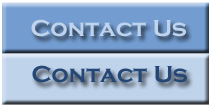 images, upload them to the SharePoint library of your choice.
For our example, we're going to pretend that our image is contactus.png.
Step 2 - Create The Necessary CSS Styles
Within your copy of Microsoft's original css file, create the following classes,
#contactUs
{
display: block;
width: 210px;
height: 106px;
background: url('https://PathToImageLocation/contactus.png') no-repeat 0 0;
}
#contactUs:hover
{
background-position: 0 -106px;
}
#contactUs span
{
display: none;
}
Change width and height to match your image width and height, as well as the location to the file itself.
Step 3 - Display The Button On The Appropriate Page
Add a Content Editor Web Part to the page where you would like to display the button. Make all applicable changes to the web part, such as giving it a meaningful name, removing the chrome, etc.
Select the Content Editor Web Part Click here to add new content link.
Locate the HTML icon within the Markup section of the ribbon, select it, and then select Edit HTML Source.
Type in or copy and paste the code below in the HTML Source web page dialog that displays:
<DIV align=center><A id=contactUs title="Contact Us" href=DestinationURLhere target=""></A></DIV>
Replace the id value above with the name of your own CSS, as well as the title applicable to your own situation. Don't forget to also replace the URL to point to the file, site, Web site, library, etc., applicable to your needs.
This solution is for when you need to publish a button on a page, not on the Top Nav or Quick Launch.
I prefer using one single image per button and make the image "shift up and down" depending on whether is just active or being hovered. But there are going to be situations where two images are necessary. This is one solution I use for those cases.
For this solution I use:
- Two images (one for each button status)
- CSS
- Content Editor Web Part
Step 1 - Create The Necessary Images Using a Graphics Tool
Create your own button using an application such as Photoshop or Fireworks, or use one from a trusted source.
The trick is to make the images look exactly the same size so when they swap they do so seamingless. You should also make sure that the label you will be using is of the exact same font type and size for both images. Feel free to change the font colour if the background of oneof the images merges too much with it. However, make sure to keep it the same size and font family, as well as position within the image, so they swap smoothly.
Once you have created or acquired the necessary images, upload them to the SharePoint library of your choice.
For our example we're going to pretend that our images are catalog.jpg and cataloghov.jpg.
Step 2 - Create The Necessary CSS Styles
Within your copy of Microsoft's original css file, create two classes. One will be used for one button status, while the other one will be used for the other button status.
Button Normal Status:
#catalog
{
display: block;
width: 155px;
height: 60px;
background: url("https://PathToImageLocation/catalog.jpg") no-repeat 0 0;
}
Change width and height to match your image width and height, as well as the location to the file itself.
Button Rollover Status:
#catalog:hover
{
background: url("https://PathToImageLocation/cataloghov.jpg") no-repeat 0 0;
}
Step 3 - Create The Content Editor Web Part to Display the Button
Insert a Content Editor Web Part on the page where you want to display the button. Make all applicable changes to the web part, such as giving it a meaningful name, removing the chrome, etc.
Select the Content Editor Web Part Click here to add new content link.
Locate the HTML icon within the Markup section of the ribbon, select it, and then select Edit HTML Source.
Type in or copy and paste the code below in the HTML Source web page dialog that displays:
<DIV align=center><A id=catalog title="Catalog" href=DestinationURLhere target=""></A></DIV>
Replace the id value above with the name of your own CSS, as well as the title applicable to your own situation. Don't forget to also replace the URL to point to the file, site, Web site, library, etc., applicable to your needs.
I love the fact that Microsoft now included Fields to display options within a Content Query Web Part (CQWP). In more than one ocassion where I didn't need to get too fancy about styles, I was able to do with this option instead of having to create custom styles in my Style Sheets. I'm saying this because the solution I'm about to present has been simplified to take advantage of these new SharePoint 2010 features. So let's dive in.
More than once I've been asked to use "nicer" images or small logos in place of the typical HTML bullet or the little orange square bullet that SharePoint usually displays for bulleted lists.
Step 1 - Create, Reuse, or Adapt Image to be used as Bullet
So the first thing I usually do is I create or adapt a bullet from images the customer might provide, or I create one from scratch using an imaging application such as Photoshop or Fireworks.
So once you have your image, upload it to a library of your choice. When it comes to elements that I'm going to be using as part of my custom look and feel, I have a tendency to "hide" them in places my users won't be able to find easily. More than once I ended up with that "loverly" red X in place of images because my customers would not know what the file is and delete it. So I usually create a Master Page folder within the Style Library and I upload (and publish) all my images for custom look and feel there. So this example will assume that. We will also assume the name for the image is divbullet.gif.
Step 2 - Create The Necessary CSS Class Definitions
In my copy of the corev4.css file, I create a class that usually looks something like this:
.myBullet
{
font-family: Verdana, Helvetica, Arial, sans-serif;
font-size: 8pt;
padding: 4px 0px 0px 18px;
color: #ffffff;
text-align: left;
background-image: url(PathToYourImage/divbullet.gif);
background-repeat: no-repeat;
background-position: inherit;
}
You may need to adapt the padding settings to better accomodate for the image of your choice.
Step 3 - Create The Necessary Item Styles
After making a copy of Microsoft's original Style Sheet, modify your copy to include a style that will be used by the CQWP.
<xsl:template name="MyLinks" match="Row[@'MyLinks']" mode="itemstyle">
<xsl:variable name="DisplayTitle">
<xsl:call-template name="OuterTemplate.GetTitle">
<xsl:with-param name="Title" select="@MyLink"/>
<xsl:with-param name="UrlColumnName" select="'URL'"/>
</xsl:call-template>
</xsl:variable>
<xsl:variable name="LinkTarget">
<xsl:if test="@OpenInNewWindow = 'True'" >_blank</xsl:if>
</xsl:variable>
<div id="linkitem" >
<!-- Apply special bullet styles -->
<div class="myBullet" >
<!-- Link to item -->
<xsl:call-template name="OuterTemplate.CallPresenceStatusIconTemplate"/>
<a>
<xsl:attribute name="href">
<xsl:value-of select="substring-before($DisplayTitle,', ')"></xsl:value-of>
</xsl:attribute>
<xsl:attribute name="title">
<xsl:value-of select="@Description"></xsl:value-of>
</xsl:attribute>
<xsl:value-of select="substring-after($DisplayTitle,', ')"></xsl:value-of>
</a>
</div>
</div>
</xsl:template>
Step 4 - Add and Modify Content Query Web Part (CQWP)
Go to the page where you would like to display the links, insert a CQWP, open its tool pane, select the custom links list within Query, apply filters if any (such as DisplayYN), remove chrome, provide a name and make any other changes that you may see fit. Then export the web part to your computer, open it using Notepad, and make the following changes:
<property name="CommonViewFields">Title,Text;MyLink,URL;DisplayYN,Choice</property>
<property name="ItemXslLink" >/sites/SiteName/Style Library/XSL Style Sheets/CUSTOMItemStyle.xsl</property>
Save the modified CQWP, upload it to the page where it should display, edit the web part, and verify that within the Fields to display section (you may need to expand Presentation) MyLink displays in the name for the hyperlink column in the Link box; otherwise, type it in.
Within the Styles section of the web part tool part, select MyLinks at the Item Style drop-down list.
Select [Apply] and [OK] at the bottom of the tool part.
Another frequent request I receive is the ability to post a message that the site is under construction or an important announcement needs to be displayed. For the announcements, many of my customers do not want to use the actual SharePoint Announcement list. They just want something that stands out on their home page.
So I usually provide one of two solutions:
- Scrolling Marquee with no styles
- Scrolling Marquee with styles
Scrolling Marquee (No Styles)
Well, what I actually mean by 'no styles' is simple HTML code with no need to create XSL templates. Usually this is the easiest way to go. But for some other assignments with more complex needs, I had to recourse to well, a little bit more complex of a solution.
And for the simple, easy to implement solution, this is what I do:
1. Add a Content Editor Web Part to the page where you would like to display a marquee
2. Edit and modify the Content Editor web part properties, remove the chrome, make any other changes as desired, give the web part a meaningful name (for example, Marquee), and then select [Apply] followed by [OK]
3. Select Click here to add new content at the Content Editor Web Part
4. Locate the HTML icon within the Markup section of the ribbon, select it, and then select Edit HTML Source
5. Type in or copy and paste the code below in the HTML Source web page dialog
<FONT face="Verdana" color=#ff0000 size=2>
<P align=center>
<MARQUEE scrollDelay=95 width=500 height=16>
<DIV align=left>Note: Replace this sample text with any message applicable to your particular situation.</DIV></MARQUEE></P></FONT>
6. Select [OK] and save the page (and publish if publishing is turned on for your site)
You can change anything that is highlighted in red above, as well as the sample text in blue to suit your own needs.
Note: If SharePoint modifies the code above after you saved and it doesn't render as desired, create a TXT file containing the code above, upload the file to a document library, and reference the file via the Content Editor Web Part.
Scrolling Marquee (With Styles)
In a handful of situations I had to create something a little bit more complex than the simple HTML marquee above. For those cases, I used the following elements:
- Site Column (Optional)
- Custom List
- Styles (CSS)
- XSL Template
- Customized Content Query Web Part
Step 1 - Site Column (Optional)
Since I don't like doing things more times than absolutely necessary, for most part I end up creating site columns for columns I know I'm going to be using at more than one list or library. For this particular scenario, I created a site column named DisplayYN (Yes/No checkbox or Choice (Yes/No) column). For this example, we are going to say the DisplayYN column is Boolean (Yes/No checkbox).
Step 2 - Create Alerts Custom List
The next step was to create a custom list to manage the Alerts. The list would contain only a couple of columns:
- Title (the text for the alert)
- DisplayYN site column
You may be asking yourself why the custom list and why the DisplayYN flag. In many projects I have to work on there's a business approval process behind the scenes where usually the person who creates the text and items on the list is not necessarily the one who gives the green light to display the alerts on the sites. So these people go through review processes until everybody is happy and then the person responsible for the site or alerts edits the item and selects DisplayYN to 'Yes.'
Step 3 - Create The Necessary Styles (CSS)
I create a custom style definition in my CSS file (the copy I created from the corev4.css file). If you have been following my posts, then you know how I advocate towards making copies of Microsoft's files and leaving their original files alone. So back to that point, the following is an example class I may create:
.myAlert
{
font-family: Verdana, Helvetica, Arial, sans-serif;
font-size: 10pt;
padding: 3px 3px 3px 3px;
color: #ffffff;
font-weight: bold;
text-align: left;
background-color: red;
border: 1px gray solid;
}
Don't forget to check in and publish (if needed) your CSS file for the changes to become visible to those users who have been granted the lowest access levels to the site, as well as registering and referencing your external CSS file on your custom master page, as needed.
Step 4 - Create The Necessary Item Style Templates
In your XSL Style Sheet (the one that I hope you copied from Microsoft's original) I create a template, as follows,
<xsl:template name="Alert" match="Row[@'Alert']" mode="itemstyle">
<div id="alert" class="myAlert">
<marquee scrollamount="2" scrolldelay="1"><xsl:value-of select="@Title"/></marquee>
</div>
</xsl:template>
Some designers also like to include an entry on their Content Query Main to declare the above template. Not everybody follows this rule. Depending on the styles, SharePoint will still render the items on the page, whether you modify the Content Query Main file or not.
Step 5 - Create The Custom Content Query Web Part (CQWP)
I add a CQWP to the home page or page where the alert should display at. I then modify the CQWP to use the custom list as source and I set the filter on DisplayYN equals Yes. That way only those items on the custom alerts list that have been selected to be displayed will display.
For most part, my customers never select more than one item at a time. But they usually want to know which other alerts they had published before. That's when this second solution turns out to be better than the simple HTML shared further above.
Then I export the CQWP to my computer and I open it using a tool like Notepad. I then make the following changes:
<property name="ItemXslLink" >/sites/SiteName/Style Library/XSL Style Sheets/CUSTOMItemStyle.xsl</property>
<property name="MainXslLink" >/sites/SiteName/Style Library/XSL Style Sheets/CUSTOMContentQueryMain.xsl</property>
<property name="Xsl" ><xsl:stylesheet xmlns:x="http://www.w3.org/2001/XMLSchema" version="1.0" xmlns:xsl="http://www.w3.org/1999/XSL/Transform" xmlns:cmswrt="http://schemas.microsoft.com/WebPart/v3/Publishing/runtime" exclude-result-prefixes="xsl cmswrt x" > <xsl:import href="/Style Library/XSL Style Sheets/Header.xsl" /> <xsl:import href="/Style Library/XSL Style Sheets/CUSTOMItemStyle.xsl" /> <xsl:import href="/Style Library/XSL Style Sheets/CUSTOMContentQueryMain.xsl" /> </xsl:stylesheet></property>
I save and then I import the updated CQWP to the page. The last thing is to select my style within the drop-down Presentation list within the CQWP tool pane. And finally, I delete the original CQWP from the page once I make sure the customized one is working as expected.
Visit this page to view a list of the Locale IDs (LCID) applied in XSL format statements to select the appropriate one for your particular needs if date, time, currency, or all of the above are not displaying in the desired or needed format on a Data View Web Part. (This also applies to Content Query Web Parts.).
Add this snippet of code to the Item Style (Style Sheet) file to render the names of the fields being passed to the Content Query Web Part (CQWP). Note that this code will be temporary. You don't want to leave this in the finished Item Style!
<xsl:template name="RenderFieldsBeingPassed" match="Row['RenderFieldsBeingPassed']" mode="itemstyle">
<xsl:for-each select="@*">
P:<xsl:value-of select="name()" />
</xsl:for-each>
</xsl:template>
Save the file. Return to the site (in the browser) and refresh the page. Open the Web Part Tool Pane for the CQWP and expand Presentation. Then under Styles change the Item Style to the new custom style (RenderFieldsBeingPassed) in the drop down. Select Apply.
The CQWP will now list out all of the fields that are being passed.
Some of the changes that Microsoft has made to SharePoint has made Designers' work a little bit more cumbersome. One of the things that I remember being able to do in MOSS 2007 was the ability to create publishing sub site templates that I could reuse over and over again.
They say that Microsoft never intended for us to be able to create publishing sub site templates, not even in MOSS 2007. But by turning the publishing feature off, we were able to get around and save the sub site as a template, create a new one from said template, and then turn the publishing features back on for the newly created sub site.
(Another trick was to backup the sub site in SharePoint Designer and then restore it over a blank sub site. But that option is gone in SharePoint 2010, as well.)
So the only way I found to make my life a bit easier as as Designer and to reduce the amount of repetitive work is using the Manage Content and Structure tool.
1. Create the publishing sub site you want to use as template for creating the new ones
2. Create all pages and components (lists, web parts, etc.)
3. Once you have completely created your publishing sub site, the one that is going to serve as template, go to the level right above it and select [Site Actions] > Manage Content and Structure
4. Click the row where the name of the sub site displays and select Copy from the pop-up menu
5. Select the destination where you would like to paste the sub site to
6. Access the newly created sub site via your browser (you will need to leave the Site Content and Structure page), rename the sub site, edit the home page, edit any content query web parts (if any) that you may have on the home page or any other pages to the case, and make them point to the sub site’s lists and libraries, instead
Important Note: When a sub site is created this way, web parts such as the Content Query Web Parts will still be pointing to the original sub site used as template for creating new sub site.
That’s it. The only thing to keep in mind is that when you modify the path to the appropriate list or library for a content query web parts by using the [Browse] button you will lose all the other settings for said Content Query Web Part (for example, filters, etc.). To prevent this from happening, edit the path manually (for example, if the path to is /SiteName/SubSiteTemplates/SubSiteTemplateName/Lists/ListName and it should read /SiteName/NewSubSiteName/SubSiteTemplateName/Lists/ListName, type in that one section of the path; this will prevent the filters from being cleared.)
|

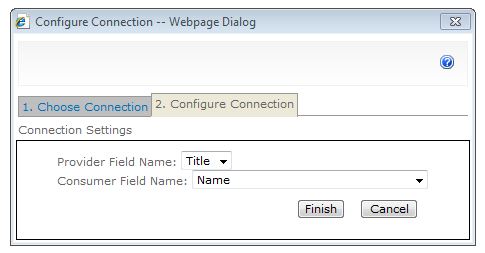
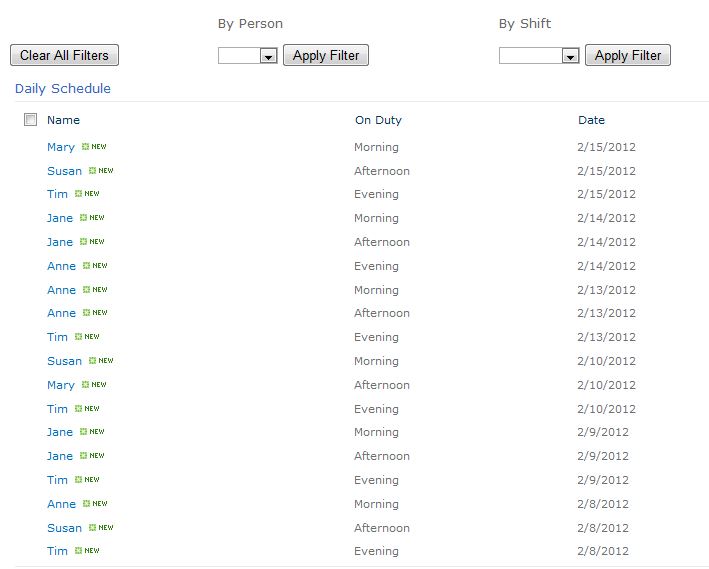
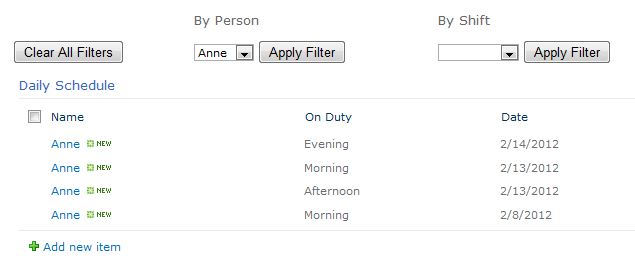
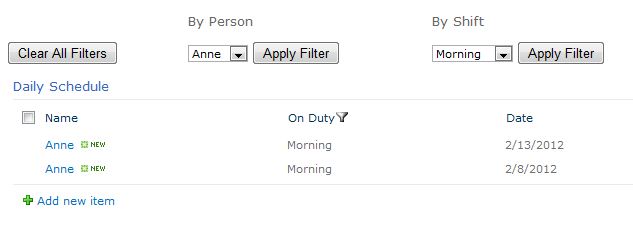
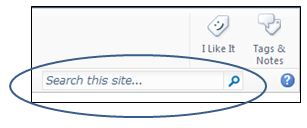



 RSS Feed
RSS Feed